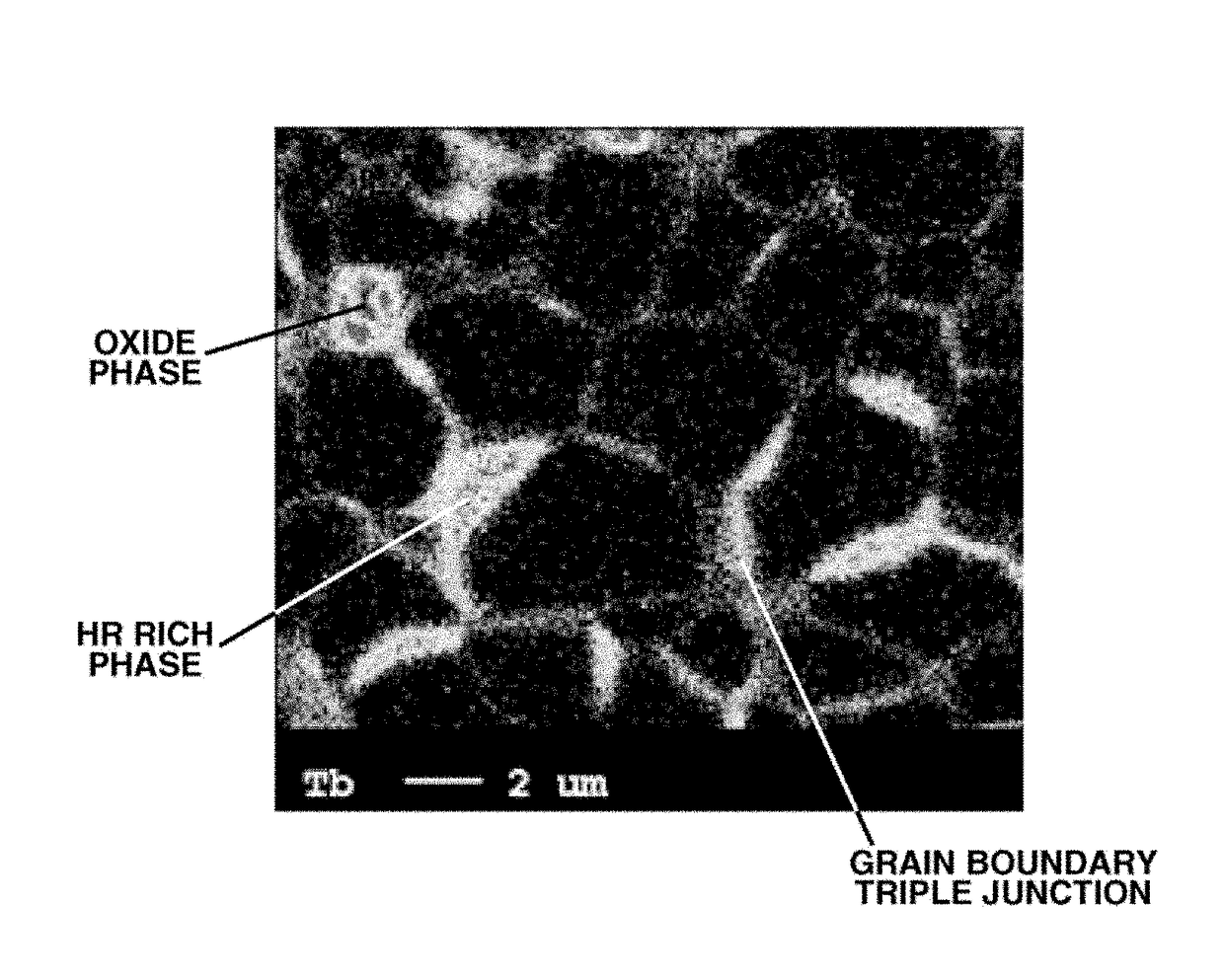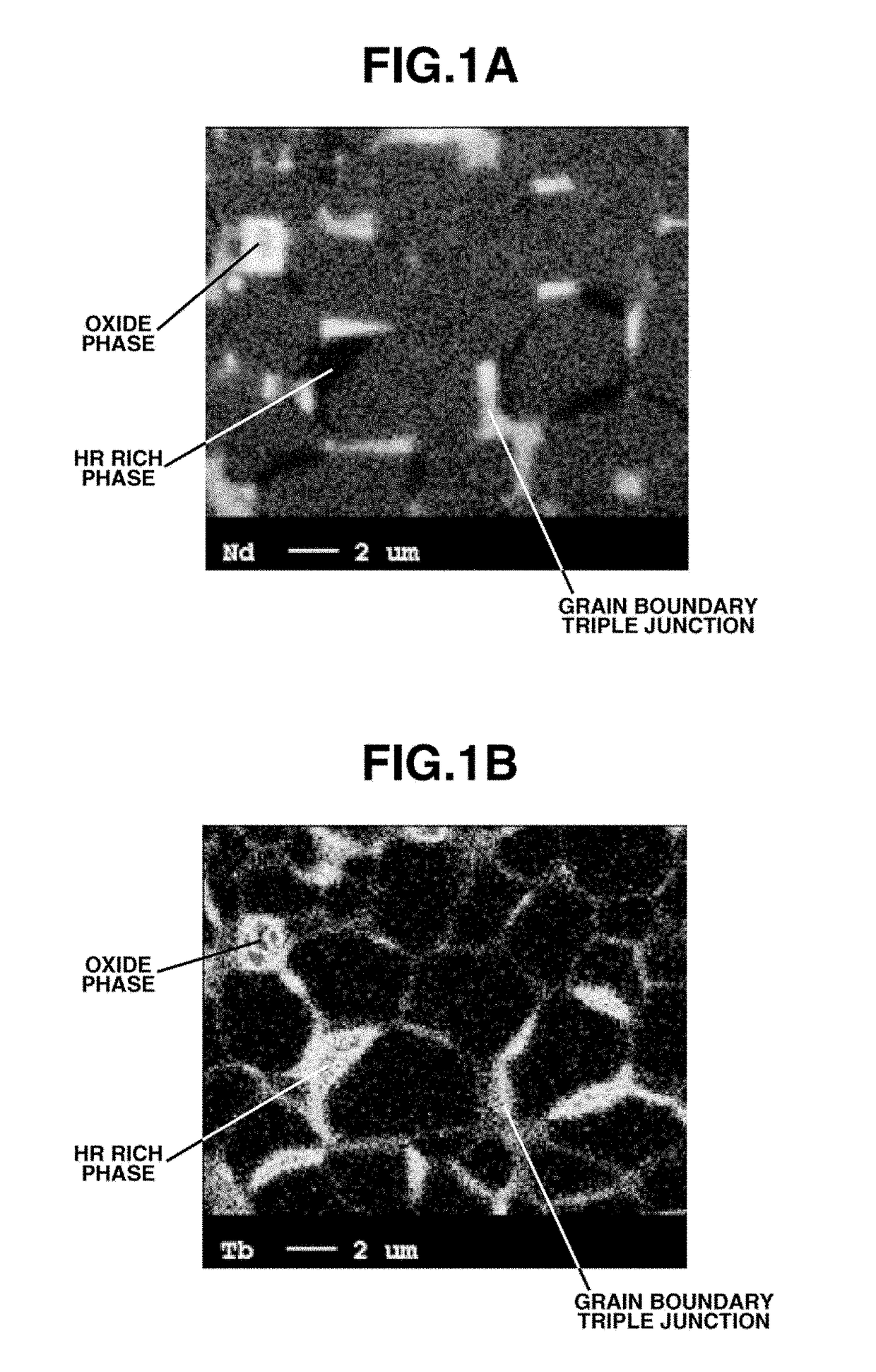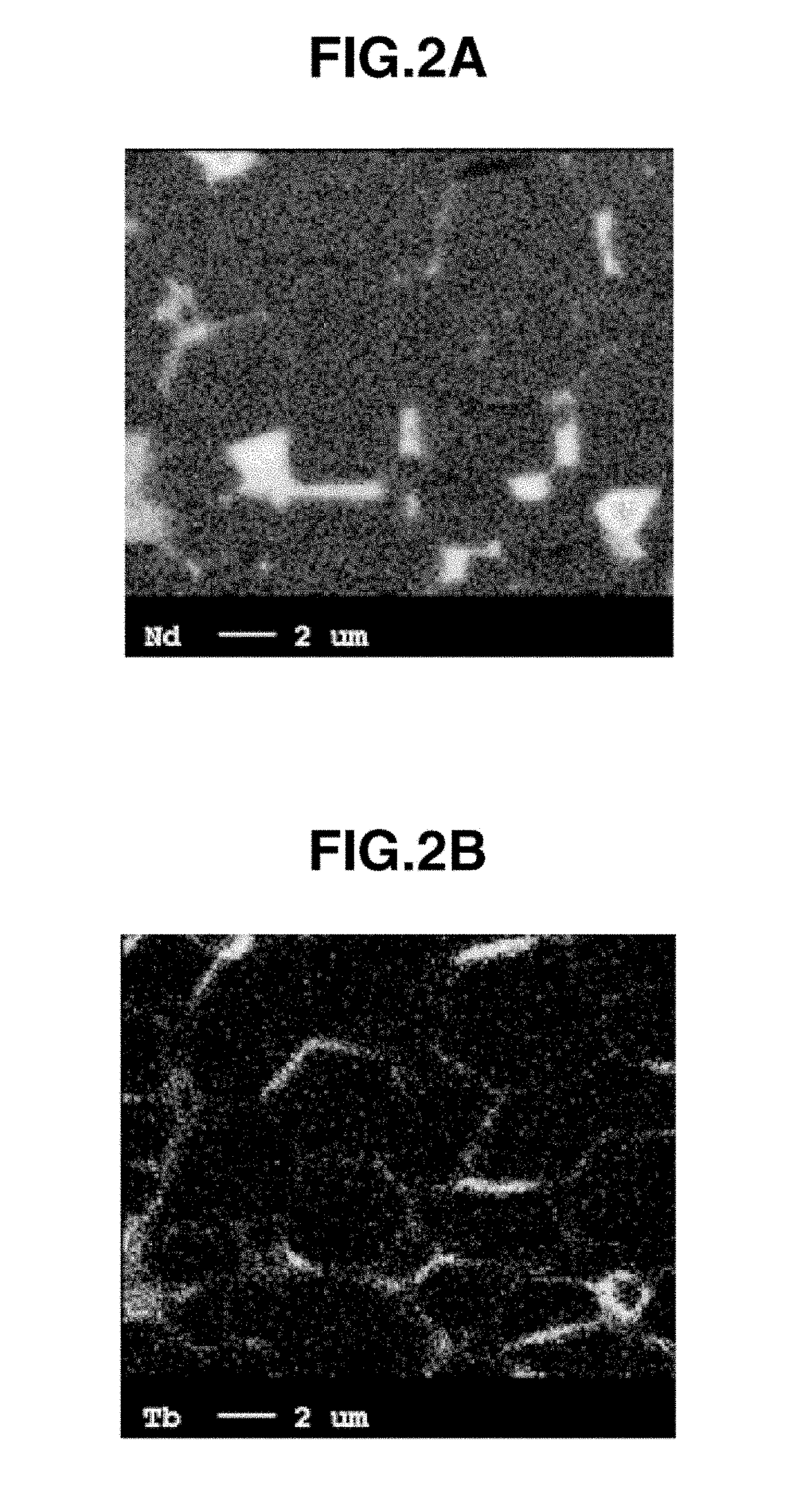METHOD FOR PREPARING R-Fe-B SINTERED MAGNET
a sintered magnet and r-fe technology, applied in the field of preparing an r-fe-b base sintered magnet, can solve the problems of low coercivity of nd magnets at elevated temperature, geopolitical risks, limited commercial operation areas, etc., and achieve high coercivity
- Summary
- Abstract
- Description
- Claims
- Application Information
AI Technical Summary
Benefits of technology
Problems solved by technology
Method used
Image
Examples
example
[0089]Examples are given below for further illustrating the invention although the invention is not limited thereto.
reference examples 1 and 2
[0090]A ribbon form alloy was prepared by the strip casting technique, specifically by using Nd or didymium (mixture of Nd and Pr) as rare earth element R, electrolytic iron, cobalt, metals or alloys as element Ms and element M2, and ferroboron (Fe—B alloy), weighing them so as to meet the desired composition shown in Table 1, melting the mix in an Ar gas atmosphere on a high-frequency induction furnace, and strip casting the melt onto a water-cooled copper chill roll. The ribbon form alloy had a thickness of about 0.2 to 0.3 mm.
[0091]The alloy was subjected to hydrogen decrepitation, that is, hydrogen absorption at normal temperature and subsequent heating at 600° C. in vacuum for hydrogen desorption. To the resulting alloy powder, 0.07 wt % of stearic acid as lubricant was added and mixed. The coarse powder was finely milled on a jet mill using nitrogen stream, into a fine powder having an average particle size of about 3 μm.
[0092]In an inert gas atmosphere, a mold of a compacting...
PUM
 Login to View More
Login to View More Abstract
Description
Claims
Application Information
 Login to View More
Login to View More - R&D
- Intellectual Property
- Life Sciences
- Materials
- Tech Scout
- Unparalleled Data Quality
- Higher Quality Content
- 60% Fewer Hallucinations
Browse by: Latest US Patents, China's latest patents, Technical Efficacy Thesaurus, Application Domain, Technology Topic, Popular Technical Reports.
© 2025 PatSnap. All rights reserved.Legal|Privacy policy|Modern Slavery Act Transparency Statement|Sitemap|About US| Contact US: help@patsnap.com



